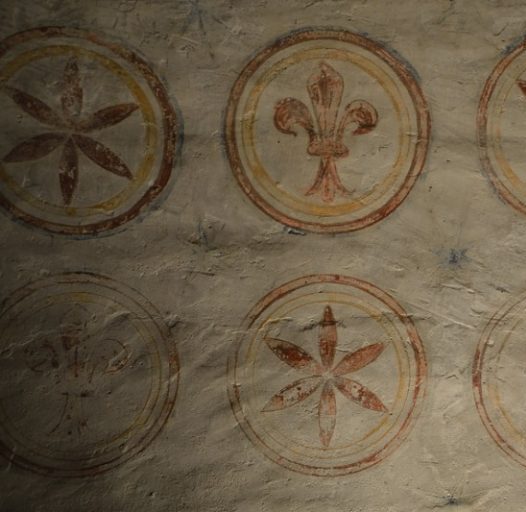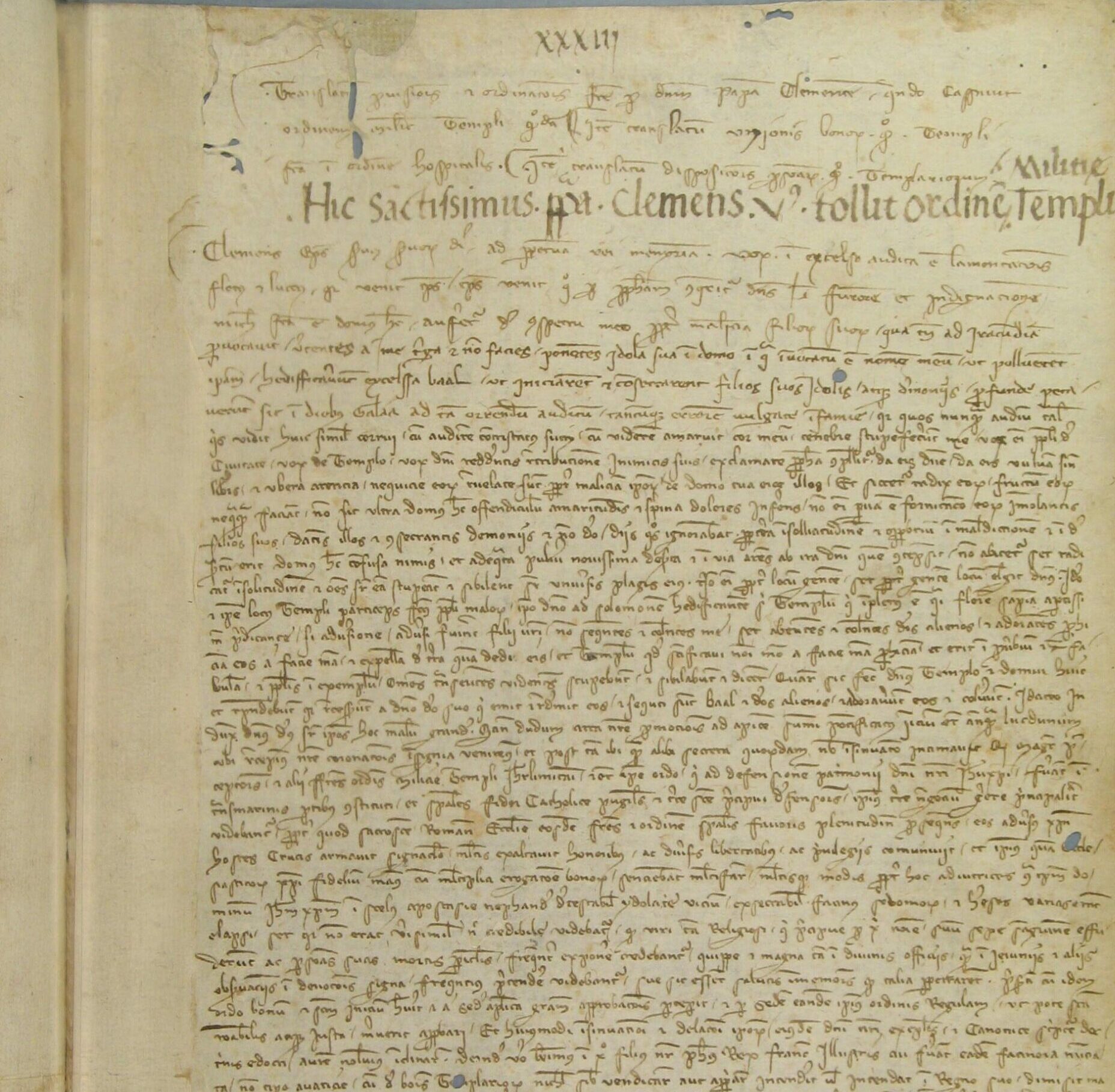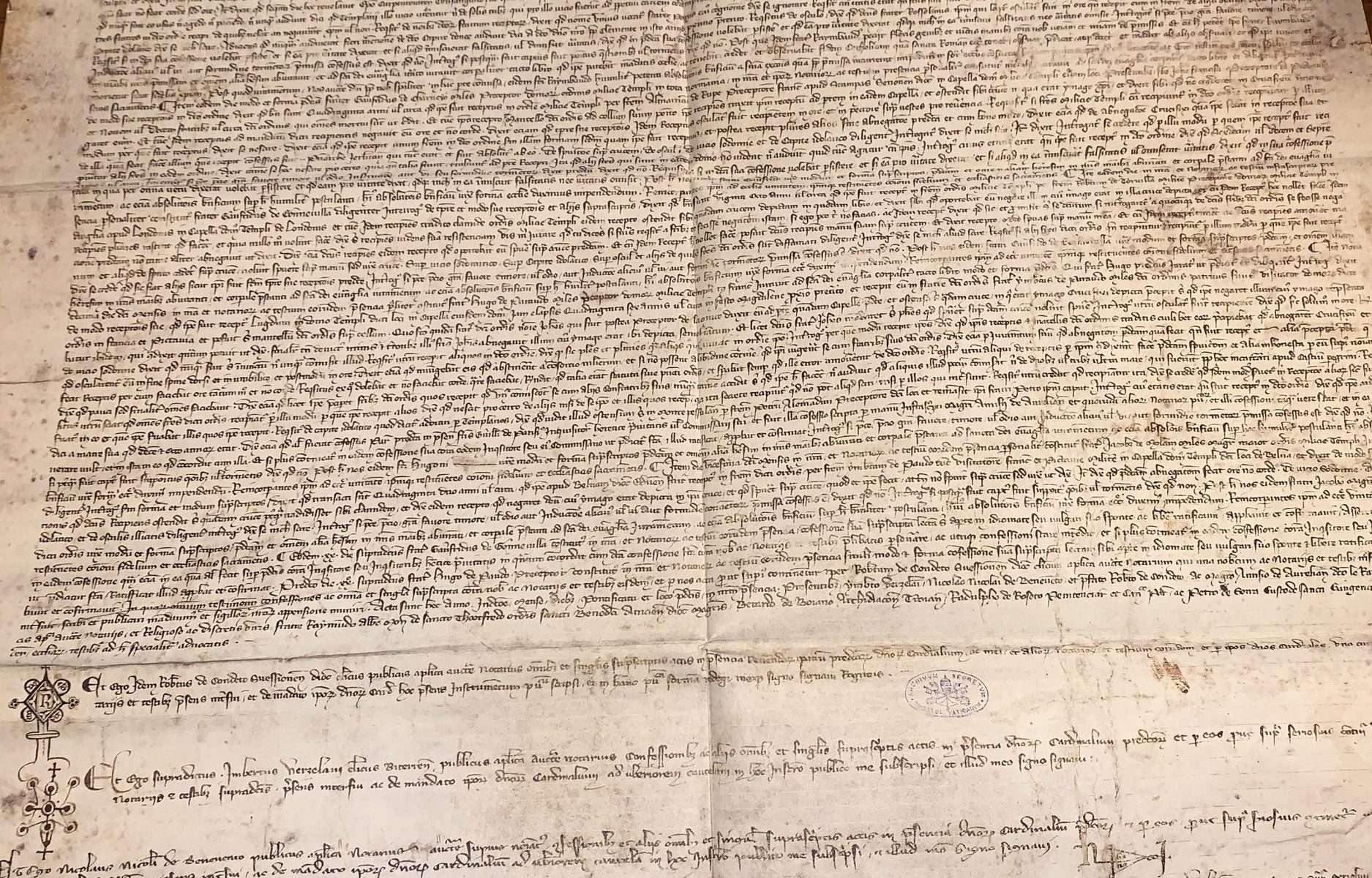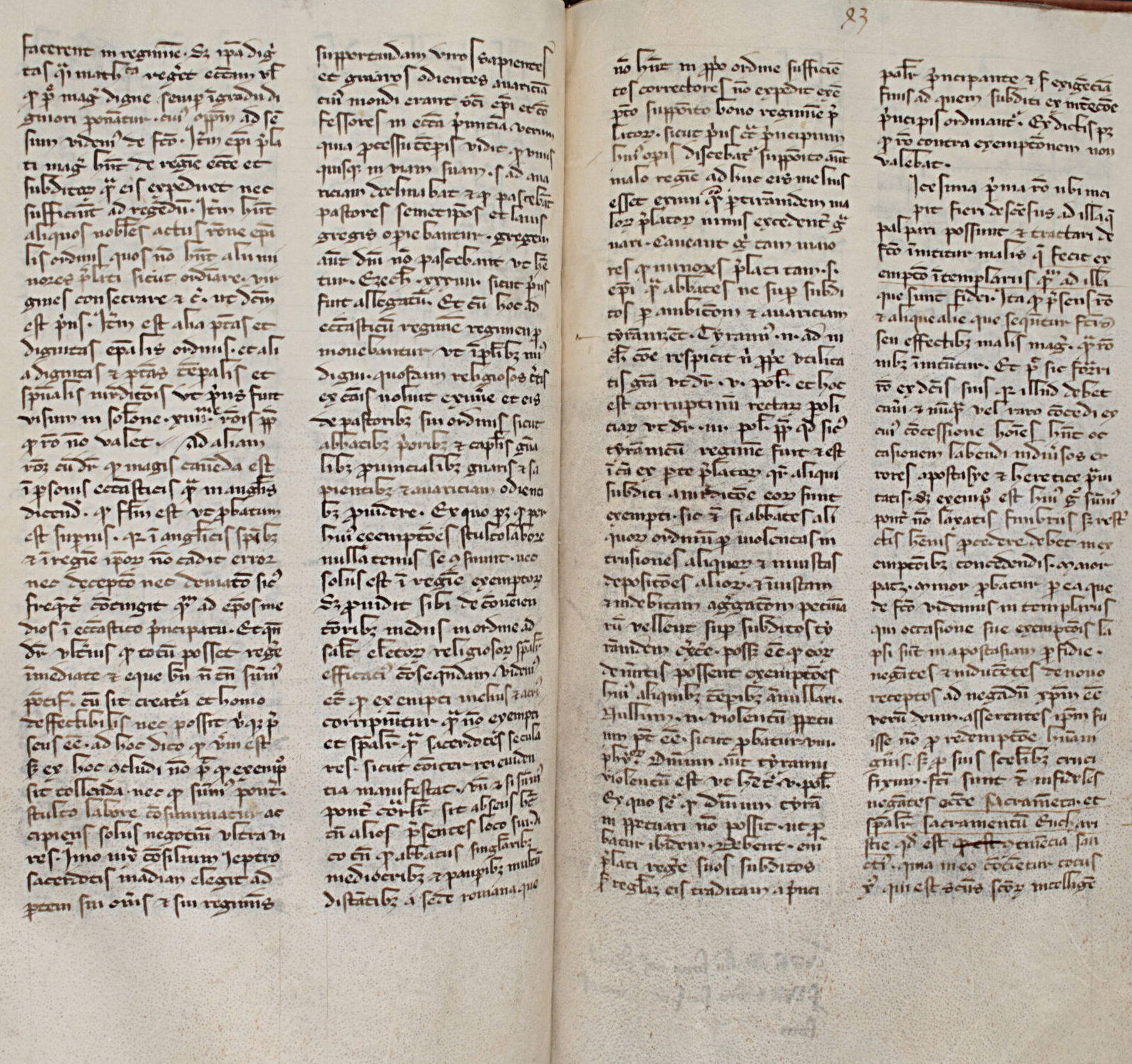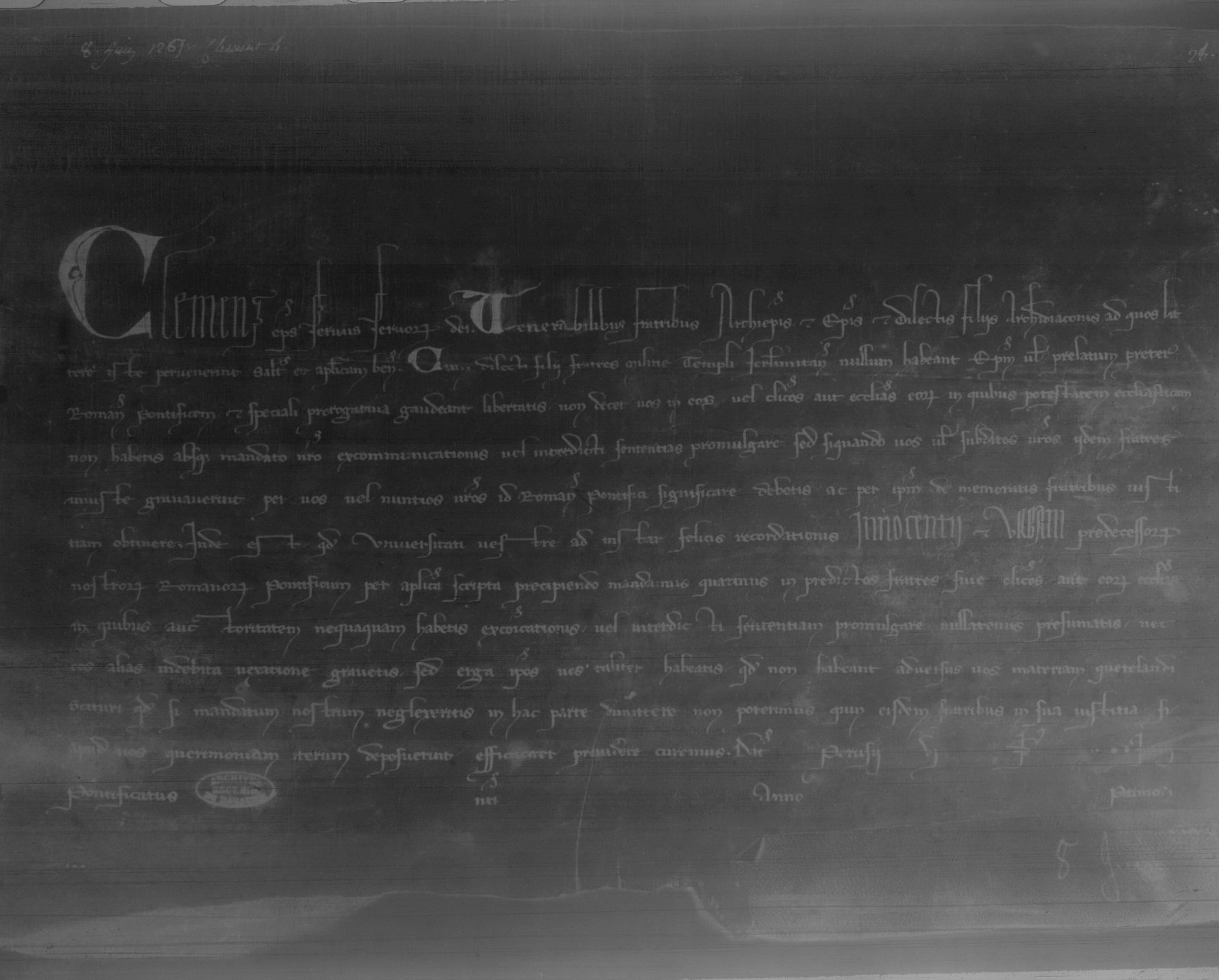Progress
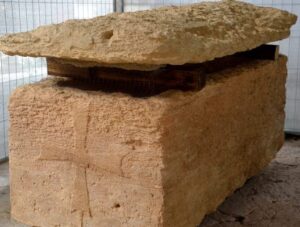
The work began in 2019 with the study of the tomb of Arnau de Torroja in San Fermo in Verona. This was followed by sightings and analyses of documents in the Vatican Secret Archives and the Archive Nationale of Paris. Within a short time, other research partners were recruited, so that the work now benefits from numerous networks.
On the basis of the rediscovered documents from 1265, which deal with the prohibition of excommunication and banishment of the Templars, it was possible after more than 700 years to initiate proceedings with the aim of rehabilitating the Templar Order – a first interim result – with immediate and current implications!
The research group works closely networked and in permanent exchange on the complete reappraisal and historical reconstruction of the history of the Knights Templar. Well-known institutions have promised access to further Templar tombs and other burials of high relevance for the history of the Church.
How does the project relate to legal studies?
The historical reconstruction:
The XIII and XIV centuries and the Templars.
These centuries were marked by warlike tensions and conflicts: for example, the war against Saladin, in which the Templars were defeated, and also the III and VI Crusades. Also, numerous decisions of the family of the Hohenstaufen, especially of the Emperor of the Holy Roman Empire Frederick II, contributed to the persistence of conflicts. The deployment of the Templars in the Kingdom of Jerusalem, who provided reliable services there as soldiers in the name of the Catholic Church, was of great importance. A large part of the Templars remained in the Holy Land until 1291, in the last bastion of protection of the Catholics in Saint John of Acre. Also in Italy they served as the Pope’s own army against his enemies. In the XIII century they supported the Papacy especially against the plans of the family of the Hohenstaufen to strengthen their own power and to the detriment of the Papacy especially during the conflict between the Popes and the Holy Roman Emperor. It is also worth mentioning at this point – in order to illustrate once again the importance of the Templars for the Church – that especially the period of the XII and XIII centuries was of enormous importance for the Spanish Reconquista and, consequently, for the Popes and for Christianity as a whole. Regarding the weighting of the motives for the Reconquista, opinions in research differ widely. Under discussion are the religious motivation, the “national” aspect and – with regard to the initial phase – a regional will to resist foreign rule. In the High Middle Ages, however, the struggle against the Muslims in Spain was perceived by the Christian rulers of Europe as a fight for all of Christendom and as a holy war. The Muslim side had known the warlike aspect of jihad since Muhammad’s war campaigns against neighboring countries and had also undertaken the conquest of Spain in this spirit. The knighthood that dominated the military conquest of Spain was composed of European knights summoned to the peninsula by the popes and was modeled on the Knights Templar. The decisive turning point that finally gave the Christians the military upper hand was the Battle of Las Navas de Tolosa on July 16, 1212, in which troops from the allied kingdoms of Castile, Navarre, Aragon and León and French contingents under Alfonso VIII defeated the Almohads under Caliph Muhammad an-Nasir. In the course of the Spanish Reconquista, the conquest of Cordoba (1236) and Seville (1248) by Castile, Valencia (1238) by Aragon and the Algarve (1250) by Portugal were decisive. Although Murcia and Granada were also subjugated, in 1262 a Muslim rebellion broke out again throughout Andalusia, supported by Moroccan forces. After the final conquest of Murcia by Castile and Aragon in 1265, only the Nazarite Emirate of Granada remained Muslim for the time being as a Castilian vassal state. Further interventions and several campaigns by the Moroccan Merinids failed in 1291, thanks in particular to the help of the Templars.
In order to return the focus to the core issue, the problem of the dissolution of the Order of the Temple, which is related to the four bulls discussed here, it is worthwhile to first take a closer look at the person who is actually responsible for the “dissolution” of the Order: Pope Clement V, whose civil name is Bertrand de Got. It is assumed that the Frenchman, born between 1250 and 1265 in Villandraut, was descended from an old noble family of southern France. Clement V joined the Grammontensian Order and became a monk. He studied law at the Roman Law School in Orléans and in Bologna. On June 5, 1305, the conclave in Perugia elected him as the new pope. The handing over of the chair by Pope Clement V took place at his request on November 14, 1305 in Lyon, present at that time was also the friendly French King Philip IV. In March 1309 he moved the seat of the popes from Rome to Avignon, whereupon began the long exile of the papacy, which was ended only in 1377 by Pope Gregory XI. The studied lawyer and new pope Clement V became famous because of his role in the dissolution of the Order of the Templars, first of all because of his nepotism. According to tradition, he acted as a puppet of King Philip IV, also called Philip the Fair. In 1307, during the reign of Pope Clement V, the French King Philip IV initiated the “Templar Trials” by having all the Templars in France arrested. The reason for this large-scale coup was that the French king, constantly in need of money, wanted to secure the huge fortune of the Order of the Temple, even though it was precisely this Order that had repeatedly saved the French state from national bankruptcy. In the numerous trials of the Templars, Philip IV brought charges of heresy and blasphemy against the Order by the French Inquisitor General. Confessions of the accused members of the Order were usually extorted under cruel torture. The Council of Vienne, convened by Clement V and opened by him on October 16, 1311, finally decided that the accusations of heresy and blasphemy made against the Templars could not be proven. Notwithstanding this decision, on March 22, 1312, Pope Clement V proclaimed the dissolution of the Order of the Knights Templar, recorded in writing in the bull “Vox in excelso”. This papal decree was justified as follows: The now bad reputation of the Order alone made such a measure necessary in order to avert further damage to the entire Church. Subsequently, by the bull “Ad providam”, the Pope transferred the goods of the Templars to the Order of Saint John. Under Pope Clement V, self-serving political action flourished within the Church, corruption and nepotism were the consequences. The pope further strengthened the preponderance of French or French-minded cardinals by appointing more Frenchmen as cardinals. Among them, for example, were five close relatives. Another seven relatives were appointed bishops or archbishops by him. Even contemporaries referred to the Curia of Avignon as a “Clementine fair.” The Curia became a kind of loan company for ecclesiastical dignities, which the pope granted to any solvent interested party. Pope Clement V was always in need of money for his dissolute lifestyle. As it was metaphorically said, his mistress Brunissende de Foix Talleyrand de Périgord, was more costly than “the whole Holy Land.” Pope Clement V died on April 20, 1314, probably of cancer, and was buried in the church of Notre Dame in Uzeste.
An equally important role in the history of the Order of the Temple played – as already mentioned without doubt – King Philip IV (Fontainebleau 1268-1314), who was King of France from 1285 to 1314. With him at the helm, France advanced to become a great power in Europe. With his uncompromising authority, Philip the Fair established a modern and early absolutist state, which enabled the medieval French monarchy to develop its power to an extent never seen before. His reign was particularly significant in the transfer of the papacy to Avignon and the crushing of the Knights Templar. Philip IV’s reign was marked by many conflicts and wars, beginning with the conflict in Aquitaine and the subsequent war in Flanders, where he led his army against Count Guido I of Flanders and his ally Edward I of England. The war in Flanders led by Philip was particularly costly and put an extraordinary strain on France’s finances. During the fighting, he was often saved from bankruptcy by the Templars. After the conquest of Flanders and the subsequent uprising, Philip decided to go to Italy. He then instigated a conflict with the Pope, which reached its great escalation with the Assassination of Anagni. Later, by poisoning Pope Benedict XI, he managed to install Clement V as his successor and move the seat of the papacy, henceforth controlled by him, to France. But that was not all: in order to reorganize his finances, he finally advocated the destruction of the Order of the Knights Templar.
The Bull Vox in Excelso and the abolition of the Order of the Knights Templar- A mystery of legal history:
King Philip IV was among the most influential rulers in his time. Above all, he was able to exert great influence on the Pope of the time, Clement V, so that the latter in fact acted according to his orders. Thus, the Avignonesian exile can be traced back to Philip IV, who invented a very effective method for that time to control the papacy in his interest. This influence can be seen in the fact that Pope Clement V had already noticed during the proceedings against the Templars that the numerous accusations made against the Order of the Knights Templar were fabricated and did not correspond to reality. The king’s main goal was to requisition the money owed and all the land, real estate and other property and possessions of the Templars in France in order to reorganize his own financial budget. In addition, he may have been interested in destroying the great power and reputation of the Templars, both circumstances that could be very dangerous for a despot such as he was. Precisely for these reasons, King Philip IV had an immense interest in eliminating this order. However, he only succeeded in achieving part of his goals, since a lot of money belonging to the French Templars disappeared and Templar properties could not be easily converted into money either. Therefore, he decided to sell all the properties of the Templars in France to the Order of Saint John for an enormous sum (for that time) in order to obtain liquid capital quickly.
Although a papal court had also found the Templar Order innocent in 1307, as one can learn from the parchment of Chinon, Clement V nevertheless dissolved the Order with the bull Vox in Excelso in 1312. It was a dissolution that resulted merely from a papal decision, not from that of a council, which, however, would have been necessary to dissolve the Order (the “concilio approbante” mentioned in the bull is a historical “deception”, since none of those present was allowed to speak), as the Pope himself notes in the bull in question. This extraordinary nature of the dissolution suggests that it might have been a temporary suspension (although the verb “tollere” suggests a definitive abrogation ), or even that it was not an abrogation at all. The opinions expressed in the literature diverge greatly in this regard, since there is talk of both a dissolution and a suspension. These different opinions are related to the history of the Council and the constitution, that is, the state of the bull. The history of this bull, as well as the circumstances surrounding its presumed rediscovery at the end of the 18th century, are certainly extraordinary.
Until a few months ago, it was assumed that the original bull is currently preserved in the Vatican Secret Archives. However, in March of the year 2022, it was discovered in the Vatican Secret Archives that the original version of the bull of 1312 cannot be found in the archives and that the signature indicated by the literature to date no longer exists. At the same time, it was possible to look into an internal report of the Vatican Secret Archives, in which it was already noted in 2011 that the bull could not be found in the Secret Archives.
These new findings make a historical reconstruction of the circumstances of the recovery of this bull 200 years ago as well as the history of this bull extremely necessary. After extensive research, it could be scientifically reconstructed (also for the first time) and proven that a first publication of the bull took place in 1788, more precisely in the Semanario Erudito Vol. VIII by Don Antonio Valladares. However, this version was not supported with evidence. According to the author, a second version of the bull was first published in 1806 in the work of J. Villanueva, Viaje Literario, Vol. 5. This publication was based on a handwritten copy of the bull from 1312, which was recovered in the Royal Archives of Aragon by a certain Father Caresmar. This version of the bull was subsequently adopted by several authors and, for example, was first reproduced in German by Hefele in 1866 in his work. Also the more recent versions of this bull are all based on the version of Villanueva from 1806 or on the same versionof Hefele from 1866.
It has been possible to collect these old works, starting from the first published version of the bull as well as the original copy of the bull from the Archivo de la corona de Aragon, today in the Archives of Catalonia in Barcelona. Moreover, it was suspected that probably the only original copy of the bull still preserved could be found in the manuscripts of the monastery of Citeaux, today in the municipal archives of Dijon.
In addition, historical notes from the time of King Jayme II could be found in the Catalan archives, describing the circumstances of the Bull’s creation and containing more detailed descriptions about the Council of Vienne. They were written by the official envoy of the King of Aragon in Vienne. These notes, as well as the historical (not the surviving) text of the bull, are also very relevant to current research, as they may indicate that the bull was invalid, if not a possible historical forgery. These findings, concerning the most important bull of the abolition of the Order of the Temple, could revolutionize the way the abolition is viewed.
During the summer of 2021, while researching to find the possible original versions of the bull Vox in Excelso from 1312 and its copies from the same period, it was definitely possible to find that there was no “original” version of the bull from Avignon. However, as previously mentioned, there are three “copies” of this bull: one in Barcelona in the Archivo Real de la Corona de Aragon, one in Madrid in El Escorial and one in the famous manuscripts of the monastery of Citeaux. This last reproduction of the bull is actually today in the municipal archives of Dijon.
As mentioned before: Although a papal court had found the Order of the Knights Templar innocent in 1307, as one can learn from the parchment of Chinon, Clement V nevertheless dissolved the Order with the bull Vox in Excelso in 1312. But it is precisely this problematic dissolution of the Order of the Temple by this bull, which is definitely no longer to be found, that caused most historians and legal historians to doubt the legality of the bull itself and of the whole procedure. If the original bull was illegal or even never issued, the whole procedure against the Templars and their dissolution would be null and void. But in order to reconstruct the authenticity or at least the credibility of the contents of this bull, it is necessary to take into account the copies of the time. The two Spanish copies, because of their writing and preservation, raise several doubts about their authenticity. On the contrary, the one that leaves no doubt about the authenticity of the reproduction of the text of the bull is the manuscript from Citeaux (Jacques de Thérines, Recueil de traités sur les exempts, 1312). This manuscript was written by the Cistercian historian, theologian and philosopher, Jacques de Thérines. The manuscript has been dated in France and dates from between 1312 and 1322. Few works exist on Jacques de Thérines, even though he was probably the most important historian from this period who was actually also present at the Council of Vienne. The manuscript contains 82 pages on parchment and is written in Latin. In it is not only the reproduction of the Bull Vox in excelso, but also a summary of the Council of Vienne and what happened during the Council. The words of De Thérines are to be considered objective according to the state of research, since he was neither an opponent of the Pope, nor of the Templars. The annotations and the whole chronicle itself are, in my opinion, the key to solving the mystery of the legal abolition of the Order of the Templars, since they not only consider the facts objectively, but can also be considered genuine and definitely not a historical forgery. This source is so far also the only historical chronicle written by a person personally present at the Council, which until now has been called authentic and dated by researchers. Our next research goal is the translation of the 82 pages into modern Latin and their translation. This is necessary in order to thoroughly and objectively understand the legal-historical problems of the abolition of the Order of the Temple.
In the documents collected so far could be the key for an objective and scientific evaluation of this decision. Therefore, a systematic cataloging and a scientific analysis of the collection have to be carried out. This includes the original relevant passages of the bulls and the most important documents about the events surrounding the Order of the Temple, as well as the writings about the end of the Order and the proceedings of the Inquisition. In particular, the following documents are specifically analyzed: the parchment of Chinon as well as the bulls Faciem Misericordiam I , Faciens Misericordiam II , Regnans in Coelis, Considerantes Dudum], Vox in Excelso, Ad providam I, Ad providam II, Bona templariorum, Pastoralis praeminentiaevon Clement V., as well as the two bulls Dignum esse conspicimus and the two bulls Cum dilecti filii of Clement IV from 1265. The last-mentioned bulls of Clement IV. (until now, the four papal bulls in question were considered to be one and were referred to as Dignum esse conspicimus without any reference to the two bulls Cum dilecti filii) had not been analyzed until their recent publication and were only to be found in the collection of all papal acts of Clement IV from the 19th century. The originals were untraceable in the Vatican Archives and were eventually rediscovered in the French National Archives.
As mentioned above, the documents describe circumstances that do not suggest a dissolution, but a mere temporary suspension of the Order, or even a nullity of the decision of Clement V – based on the prohibition of excommunication or sanction of the Templars, as can be seen from the publication on the four rediscovered bulls of Clement IV. These four rediscovered bulls: dignum esse conspicimus I and II, and cum dilecti filii I and II, are of no small importance, since certain privileges of the Templars (and the Knights of St. John) are described here, which make excommunication, as well as any other kind of sanction against the members of this Order, “de facto” impossible. Such an interpretation could accordingly revolutionize the current historical doctrine on the Inquisition proceedings and the end of the Templars. The acquittal of the Order according to the Parchment of Chinon, as well as the presumed suspension of the Order on the basis of the bulls “Faciem Misericordiam” and “Vox in Excelso”, together with the supposed nullity of the dissolution, would also raise extremely interesting legal-historical aspects: First, one could – thanks to the parchment of Chinon – make a legal reconstruction of the decision at the end of the trial, which was a judicial act of the Inquisition. So far, historical research has reconstructed the whole procedure and the decision only with the help of historical heuristics, but never from a legal-historical point of view. This represents a major research desideratum for the reasons mentioned above, with potentially very far-reaching implications. Second, an interpretation of the bull vox in excelso from a legal perspective is still pending. Third, a possible nullity of any possible sanction against the Templars could only be definitively clarified by a legal reconstruction of the four selected bulls of Pope Clement IV and some bulls of Pope Clement V not yet considered. Finally, a collection and cataloging of all relevant documents to be undertaken first will allow legal-historical reconstructions to be placed in direct comparison with the original sources, which could clarify many of the currently extremely unclear circumstances surrounding the dissolution of the Knights Templar from a scholarly perspective.
The future research:
The scientific study of the “Commanderie d’Auzon”:
Commanderie d’Auzon
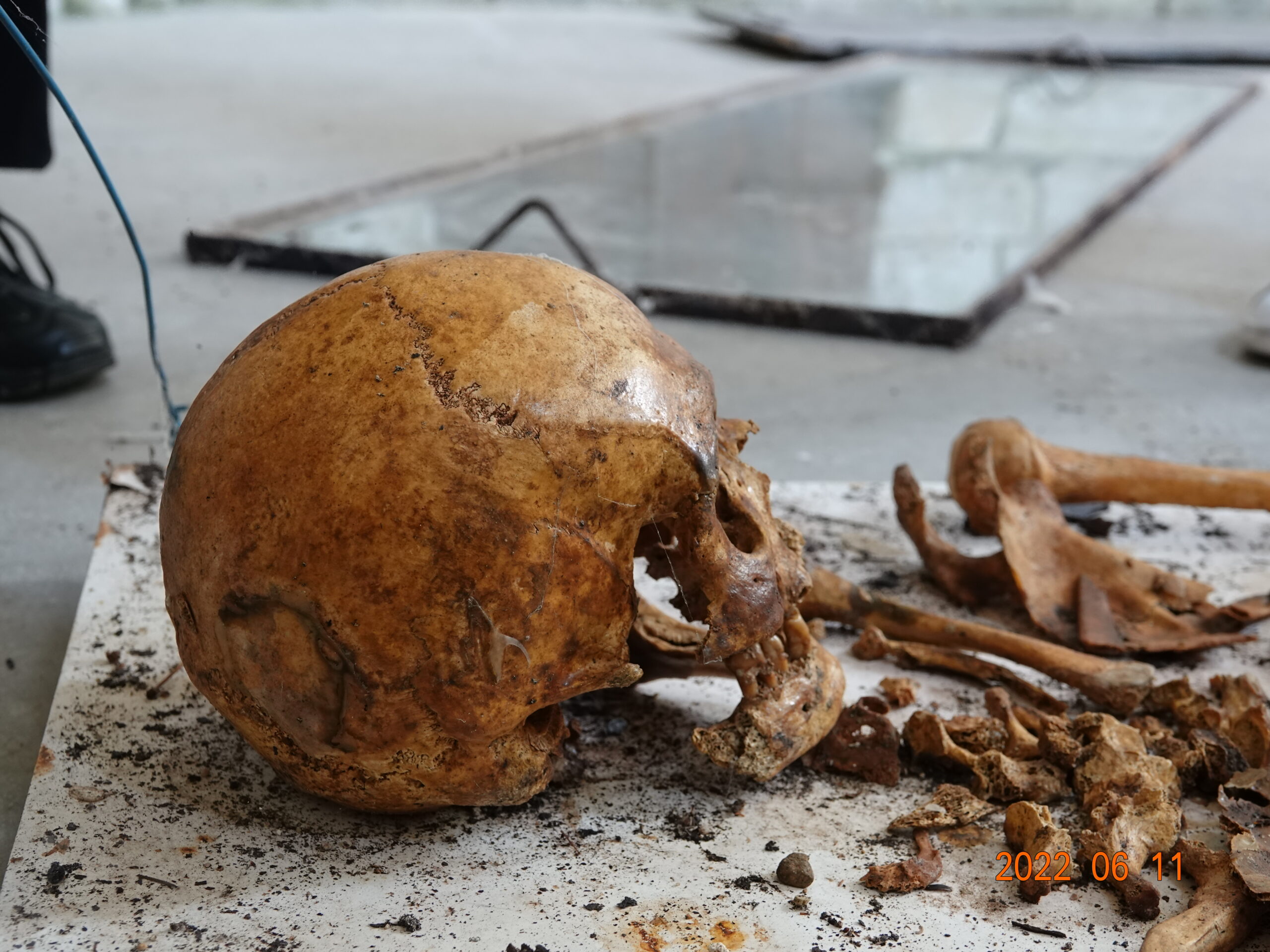
Photo © Herbert Heiß
Research with old bulls
Photos © Daniele Mattiangeli, University of Salzburg
The church of San Giacomo in Ferrara and the tomb of Hugues de Payens.
(coming soon )

